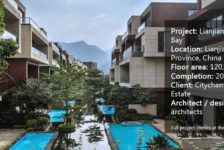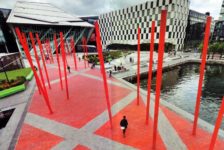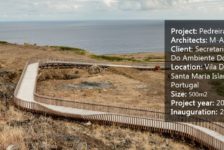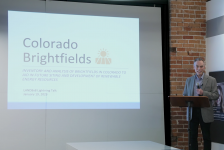We live in a precarious time. Unprecedented some might say, where every day we have no idea which way our government is moving. Even the lifelong politicians (as well as the newbies) are confused by this uncertainty and lack of direction. I can’t recall a time where there was such uneasiness with our policies, funding, and dysfunction of both major political parties. All three branches of our government are in disarray, and who knows when chaos is going to erupt.
I’m a baby boomer. That of a generation following World War II, with immigrant parents that came to this country for education and found themselves exiled here as China turned into a Communist country in 1949. There was no going back for them. I grew up with my formative years seeing our cities burn, and the white flight to the suburbs became commonplace. I saw the protests and polarization of our nation – the worst since the Civil War – envelop our country. I’ve also seen the re-birth and healing for three or four generations, from yippie to yuppie to a new generation of hipsters moving back to our cities without cars, touting ideas of apps ruling the world, and organic, local food filling our plates. Yet the same issues of race, immigration, global warming, and social justice continues to repeat itself.

Wong Family, circa 1961. Ernest Wong, front left.
As a nation, however, we are following the trend of nationalism that is flourishing around the globe. This nationalism is based on identity, which since WWII, has continued to change. Globalization has integrated us all, mixing cultures and ideas, foods, and religious practices. And we haven’t quite learned how to cope with this change. So what does this all have to do with Landscape Architecture?

Dorchester Art + Housing Collaborative by site, Landon Bone Baker Architects, Brinshore Development, and the Rebuild Foundation, Chicago, IL (Image: Ballogg Photography)
Landscape Architects have an obligation to view the world in a holistic manner. When we deal with stormwater and flooding, that water doesn’t have borders. When we design infrastructure projects that impact wetlands and how pedestrians intertwine with vehicles, the challenges require thoughtful and effective solutions. Additionally, Landscape Architects need to embrace Civic Engagement as part of our practice. We provide professional services when we testify at Plan Commissions or lead community meetings, many times acting like psychologists to the public. It is exactly these moments that the general public realizes what we do and the value of our work. Beyond climate change and sustainability, ecological restoration, and public education, perhaps we can start to solve some of the social issues that are causing so much unrest. Can we address issues of polarization, joblessness, equity, and education? We certainly can serve as the catalyst to provide solutions, much of it focused on how we design communities. In my travels to Capetown and Shanghai, I’ve seen how urban planning historically has separated people by race and economic status, controlling how people move from one place to another. The same thing occurs in Palestine and Bogota. Not that we can solve the world’s problems (or can we?) at once, but the skill set of Landscape Architects and Planners is pretty powerful.

The Burnham at Woodlawn Park by site and Landon Bone Baker Architects for the Preservation of Affordable Housing (POAH), Chicago, IL (Image: Scott Shigley Photo)
The work that we engage in is important. We design outdoor spaces. Public spaces, private spaces, places for playing, places for healing, spaces that capture the essence of who we are as human beings. Water, air, trees, and even animals are elements that we all celebrate by using them in deliberate design solutions. The commonality of outdoor space helps us interact with each other, touch the natural world and understand that we share these elements. Thus, we impact the quality of lives regardless of race, economic status, and culture. It is exactly this story that needs to be told to those who define policy, determine our funding, and keep our existence as professionals alive. So above serving ourselves and just our profession, we need to look beyond the small microcosm of our design world. We need to position ourselves to serve in the public realm, where our voices can be heard and our decisions can impact communities beyond just design. The leverage of Public Engagement is tremendous as it translates back to our struggling profession. It gives us power, responsibility, and most importantly, civility.

Ribbon cutting at Chicago Park District Park 574 by site, Chicago, IL (Image: Rose Yuen Photography)
Jonathon Geels’ moving article “The Necessity of Advocacy: Discussing the Politics of Landscape Architects” said a lot about the need to have politicians hear our story. Folks like William Pauley, FASLA, the civic leader in Atlanta was instrumental in having the voice of a Landscape Architect lead that city. Ed Garza, ASLA served as the Mayor of San Antonio, as did Michael Dul, ASLA, in Bloomfield Hills, Michigan. Mia Lehrer, FASLA serves on the US Commission on Fine Arts and the Hollywood Design Review Committee, and Terry Guen, FASLA, serves on the US Advisory Council on Historic Preservation. While numerous Landscape Architects have and continue to serve on public and governmental committees and commissions, it is the exposure to the general public that enhances our status as professionals. Even when you stand up in a community meeting with a knowledge base that exceeds others in the room, it speaks volumes about our profession. When you vote and immerse yourself in local and national politics, you empower yourself and the profession by default. We continue to talk the talk amongst ourselves and our allied professions, but it’s time to walk the walk in the general public. It is this effort and commitment that will establish policy for Landscape Architecture, create funding for our projects and develop a long sustainable market for our profession. And maybe we can change the world in the meantime.
—
Ernest C. Wong, FASLA is a founding Principal of site design group, ltd. (site), a landscape architecture and urban design firm based in Chicago. He serves on the Chicago Commission of Cultural Affairs and Chairs the Permit Review Committee of the Commission on Chicago Landmarks.










Jasmine Davis
I really enjoyed this post and I totally agree with you; I think now more than ever we need to advocate for the importance of our profession. I’ll give that article you mentioned a read, but do you personally have any thoughts as to how we can get the public to understand the necessities of our work? I’m currently a student that’s just finished the first year of an MLA program and I see the ignorance around landscape architecture whenever anyone new I meet asks me what I do. In one of our courses we’ve had the discussion about how the meaning of landscape itself is so difficult to define, and how this bleeds into the profession, but surely we can develop some way to get people to understand? For something that is quite literally all around us, I find it so fascinating that the majority of the population is blind to the profession. Anyway, I could ramble on forever about it this, but I won’t! Great article, I enjoyed reading it 🙂
J. Robert (Bob) Wainner
Jasmine;
I just have a few comments. Though I don’t quite share your enthusiasm for this article…I think it was written with the best intentions.
I did some research about University Professors….and found that close to 90% of them lean Liberal…so, they tend to push that agenda. I think with LA Professors…that percentage may be even higher.
If you look back over the history of ASLA…..IMO, they have done very little to educate the public on just what it is we do….and the importance of our profession.
In reading a recent “mission statement” written by ASLA…..it’s very obvious to me, that they are a very Liberal organization. Unfortunately, most of the “design agenda” items they advocate are found within “Gov’t Projects”…not in the private sector. For all of my LA career, I have had only “private sector clients”…..so, my LA projects have been what I call “mainstream”. Just try to get a developer to incorporate solar cells, recycle water, be OK with only native plant materials, etc. It’s going to take many, many years for much of what was written in the above article to become incorporated into a majority of projects designed by LAs.
IMO, too many University LA Professors are advocating their “Liberal green energy – sustainability agendas” to all of their LA students……then, when those students graduate and go to work in the “real world”……they don’t understand WHY most of the projects the LA firm is designing has little to do with what their LA Professors taught them for 4 or 5 yrs….or in an MLA program. Too many LA Professors are teaching “theory”….and not preparing their students for what they will face in “real world” LA firms.
After you earn your LA degree….you must have an “outstanding student LA Design Portfolio” as you visit LA firms for job interviews. IF your “design samples” are not somewhat in line with what the LA firm’s product – design….you may find it difficult to get an offer. I may be a bit out of touch here and old school…..but, I would strongly recommend LA students study and research on-line and view many various LA firms around the U.S…..look at their “Design Portfolios”…to see the types of projects they are designing.
Just an FYI…..that I thought was curious at the time, but, NOW, I understand. One of my LA professors told me in private….that he believe 50% of my fellow LA graduating classmates will never become successful Landscape Architects. It made me “wonder”…..WHY were those other 50% LA students being awarded diplomas??? Over the years, I have views some very awesome LA student Portfolios…and I have seen many that were just really bad (by LA grads who never should, IMO, have been awarded an LA degree). Guess all those LA Professors need a job though, huh?!
I think, for LA graduates to be “successful” in the “real world”……they need to KNOW what’s really being designed.
Bob
Jasmine Davis
Hmm… although I find your view a tad (just a tad!) cynical, I do have to agree with you regarding the fact that we’re not being taught real-world design solutions… although my professors are barely talking about the sustainability measures you mentioned, and more-so the aesthetics of a design. For example, we just completed a project for a redevelopment of a (real) landfill, and at first I was really excited to learn about how to remediate brownfield sites like this… we didn’t get any of that. It was ALL about the design, how it looked, and partially how it functioned but we received very little information on how to make a functional design, and further to that, our professors didn’t seem bothered by this. We did talk about design precedence, but it seemed like the information we gleaned from that again, was solely based on aesthetics. So do you recommend catering a portfolio to a specific firm i.e. only including projects that are of a similar vein to what they’re doing? I’m not even sure if that would be feasible honestly. But then again, I’ve only completed one year so I haven’t even produced enough content to make that judgement. I’m also studying in Canada, so I wonder if there’s a difference in terms of what’s being taught here vs. the US… anyway now I’m just rambling, thanks for the reply though! It’s always great to get a different perspective.
J. Robert (Bob) Wainner
Hello again Jasmie;
Yes, I know, I get a bit cynical….esp. when it comes to the MANY University Liberal Professors…and their “liberal agendas”.
Even way back when I was an LA student (74 thru 77)….I only had to spend 3 yrs. @ Texas A&M to earn my B.S.L.A. degree…as I had 3 semesters at another North Texas University and took several Architectural Design & graphic design courses. But, I don’t really feel back then, MY Professors really prepared me for the “real world”. I’m wondering WHY this is???
Not only should LA Professors be tailoring most of their LA courses to prepare their students to interview for and receive offers from LA firms….they should also be preparing LA students on HOW to prepare and pass the L.A.R.E. exam.
With an LA degree, I strongly recommend every LA grad. begin preparing to take and pass the L.A.R.E. exam. And…along with passing that L.A.R.E., you will need a minimum of (2) yrs. practicing under a “Licensed LA”. Then, you will become eligible to apply at almost any State for a “State LA License”. Although, there are a few States who do have “State Exams”…like Florida, Louisiana, California & Nevada…there are probably others as well.
I have read, that, an LA License will help increase an LA’s annual salary by approx. $25k over those LAs who are NOT “Licensed LA’s”….plus, once you have (1) State LA license, you can apply for reciprocity at most other States (for an LA Licence)…but, would need to take the State Exams at a few States. I believe entry to 5 yr. annual salaries are around $39k to $50k…once you get 30 yrs. (at LA firms), you could be looking at $100k+. But, going out on your own..say, after 10 to 15 yrs….you’ll most likely to better financially…then IF you were working for a design firm.
It’s my understanding too…that he L.A.R.E. exam is not inexpensive to take….approx. $1,500.00, And, that’s IF you pass it the on the 1st try. I’ve read that many LA students have spent literally thousands of dollars on L.A.R.E. study prep. seminars (along with the cost of travel, hotels, food, rental cars, etc.) as many of these seminars are going to be in another State you’ll have to travel to. If you don’t pass a section of the L.A.R.E…believe there are 3 to 4 sections (@ about $350.00 per section exam)….you have to take it again, pay for it again. And, if you have to travel out of town or out of State to take the L.A.R.E. multiple times…..more $$$.
*A side note: Personally, I feel both ASLA and L.A.R.E. are ripping of Landscape Architects & LA students. In my rather lengthy LA design career….I haven’t seen ASLA do much to further the cause of Landscape Architecture…OR informing the “Public” what it is we do. They are both all about the Money, Dues, Fees, etc.
So, again…..what I was mentioning above…WHY can’t University LA professors spend a few weeks in the final semester of a student’s Senior Year….learning about the L.A.R.E. exam…how to study for it….finding study materials, etc. That “should” be part of the LA degree program, IMO.
As far as an “LA Student’s Design Portfolio”……actually, I think it should be “diverse”. Containing hand sketches, color graphics, various types of design projects (large scale and small scale), samples of various computer software program drawings (as every LA firm will require those computer drawing skills). Yes, a high GPA is always helpful, but, IMO, LA firms will be looking at your “portfolio”….looking for “potential”. I think one of the points I was trying to make is that…I believe, too much of the “green energy – wind power – sustainable design – safe the Earth” is pushed by the very Liberal LA Professors. Some of that info. is of course useful to LA students…but, maybe LA Professors should be researching on-line….and looking at what “real world LA firms are designing”…..and use that, to some degree to prepare their students.
Besides having a very well written Resume’ and an outstanding “Student LA Design Portfolio” that is well organized and in a professional format…..IMO, understanding HOW to give an outstanding job interview is also critical. I found a little book several years ago called “HIRE ME” written by Patricia Drain. I think it costs less than $10.00 @ Amazon.com. This book teaches you everything you’ll need to know to give a GREAT job interview. Which is important, because, job interviews are just not easy to come by these days…so, you really MUST make every job interview count!
I realize that most students feel sort of “helpless” and if they wish to pass their LA courses, pretty much have to go along with what their LA professors are teaching. BUT, IMO, LA students should push their LA Professors (kindly)….and ensure that they (students) get the most out of those 4 or 5 years @ their University.
I just think it would be a GREAT idea for LA students to be doing “some” on-line research and looking at LA firm’s web sites….around the U.S. and even those outside of the U.S. You can learn a lot about the “quality” of professional design work…as well as what “types” of projects are being designed. I know, back when I was an LA student……I NEVER looked @ what was going on in the professional world of Landscape Architecture….but, it’s much easier NOW with the Internet to use for that purpose.
Good Luck Jasmine…..Don’t study too hard, OK…..*smile*.
Best Regards,
J. Robert (Bob) Wainner
Jasmine Davis
Thanks so much for your reply, I actually found the information super helpful and have shared your comments with a friend! I’ll definitely keep everything you’ve mentioned in mind, especially looking at firms and the different kinds of work they’re producing. It seems like such a simple thing to do, but surprisingly not something I’ve thought about while grinding through my coursework! And that’s another issue… becoming a part of an academic bubble where you’re removed from what’s actually happening with LA in the real world. Anyway, thanks again for the conversation and the in-depth insights! Best of luck to you.
Peter Franz
Like anything, people get out of their interst as much as they put into it. Not everyone desires to be in a leadership role nor might their personality suit them to be in the forefront. Landscape Architects like to see themselves as a type of mediator in the world of design. The profession approaches design from a humanist perspective of how people use spaces and interact with it and the environment. I believe this is true because LA’s seem to be interested in many aspects of the designed world, I.e. natural Environment, space, materials, forms, art, etc. This gives them the opportunity to select work that peaks their curiosity and allow flexibility to change within the profession. For a number of years, especially when I was in college the profession struggled with its identity. Personaly I went into the profession because of my interest in plants, environmental systems and design. I thought my dream job would be to manage a large private estate as the head Gardner. College was a great time to see the variety of design channels and how people used spaces and what people found Interesting to be within them.
In the private sector I did much more preparation of construction documents, building placement, roads, grading, storm drainage and amenities for large projects and ended up doing campus planning at a public University for the last 20 years. In the end it is similar to managing a large estate while still working with large projects and creating spaces for the community.
Bottom line to all this is for aspiring LA students is to seek out as much information about the profession as possible, particularly which states, cities and firms do the type of work one is interested in. Look at doing independent projects that focus on one’s interest that can be used as portfolio material. Get involved with the profession and public issues to the furthest extent you are comfortable with, not everyone needs to be the leader but involvement at any level,is participation. After a while, when more comfortable with engagement one may find they feel more comfortable with more responsibility because they become aware they have knowledge and experience to share.